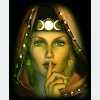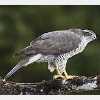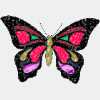| Profile | Posted by | Options | Post Date |

|
Susan10146857
|
Report
|
24 Mar 2014 00:22 |
|
LIKE :-)
|

|
RolloTheRed
|
Report
|
23 Mar 2014 23:52 |
|
The heart of Richard I Plantagenet was buried at Rouen, capital of Normandie, France. His body was buried at Fontevraud Abbey, Anjou, France.
|

|
TaniaNZ
|
Report
|
23 Mar 2014 23:48 |
|
Not funny so much as really interesting
And features our lovely Jean
|

|
Rita
|
Report
|
6 Jun 2010 16:29 |
|
THE CENOTAPH
The most important War Memorial in Britian is the Cenotaph in WhiteHall.
London desigined by the architect Edwin Landseer Lutyens, The name"Cenotaph"is derived from the Greek word "Kenos"(empty *)and Taphos (Tomb ) It was originally meant to be a temporary Structure of wood and plaster.. errected in acknowledgement of Britians War dead , it was later completed in 1920, made of Portland Stone, The arms and emblems of the various services are represented by the flags of the Army. Royal Air Force and the Royal Navy and Merchant Navy .
service men walking pass it or visiting WhiteHall on passing the Cenotaph saluted the monument , and business men and civil servants usually wearing bowler hats . would remove them in respect .
Rita
|

|
Rita
|
Report
|
29 May 2010 16:22 |
|
in 1307 the first stone bridge to span the Thames was built
A strange structure, half bridge and half street.whose houses were not removed until the later part of the 18th century..
From the windows of the houses on London bridge, and from the backs of the shops beneath those houses, rubbish was cast into the river.
for a full five centuries, while the bridge dwellers got their water by letting down buckets into the Thames that they were constantly polluting from Latrines which projected over the river..
Rita
|

|
Rita
|
Report
|
28 May 2010 10:38 |
|
Early in the history of Roman London,there were settlements without the Wall. the strict Roman municipal laws against burials within the walls of a city made the establishment of cemeteries essential and, for safety ,these cemeteries were near to the protection of the city as the urban regulations would permit. There was a Roman cemetery about where St Clement Danes church- the "Orange and Lemon " church now stands : and the street which ran from the bridge across the fleet River, to the cemetery is Fleet Street.
Rita
|

|
Rita
|
Report
|
28 May 2010 10:18 |
|
The world's first electric tube of the completely modern type was the Cenral London,opened in 1900 s a brass-plate in a subway at Bank station still commemorates-by Albert Edward Prince of Wales . K.G in the last year before he succeeded to the Throne . This was the famous "Tuppenny Tube " , so called from the uniform fare which was charged for any distance up to a total of its five -miles run from the Bank to Shepherds Bush.
Rita
|

|
MacTheOldGeezer
|
Report
|
27 May 2010 17:52 |
|
Boo again!
|

|
MacTheOldGeezer
|
Report
|
21 Mar 2010 17:22 |
|
Nudging for a special reason
|

|
Rita
|
Report
|
3 Feb 2010 14:44 |
|
The Firemans memorial was originally a memorial remembering all firefighters who died during the WW !!.
However it was realised that there was some names missing from the memorial and it was decided these should be added.
This was when the plan was developed by the Firemans Memorial Trust to add these names of all the fireman that died after the War as well.
The Statue was taken away temporarily so the names could be added.
In November 2003 there was a memorial service in St Pauls to permanently reinstated the Statue in its original location.
The Statue was designed by John W Mills ARCA FRBS and was unveiled by the Queen Mother in May 1991 on the 50th Anniversary of the final massive air-raid on London in May 1991.
The Statue is situated in Old Chance Court by St Pauls.
Last year while in London I came across the Statue and it was covered with poppy reaves and reading the card on them I found they came from all over Britian as well as from the firefighters of New York some of the reaves had cards in memory of the firefighters who died in New York.
Rita
|

|
☺Carol in Dulwich☺
|
Report
|
16 Dec 2009 13:10 |
|
The Queen at Christmas
The Queen has given out over 78,000 Christmas puddings to staff continuing the custom of King George V and King George VI
In 1953, The Queen made the first radio Christmas Broadcast from overseas, (rather than from the UK), broadcasting live from New Zealand. The first televised broadcast was in 1957, made live. The first pre-recorded broadcast took place in 1960 to allow transmission around the world.
Christmas Trees
Real Christmas trees have been used in celebrations across the world for over 1200 years
Although commonly believed to be Prince Albert, it was in fact Queen Charlotte who brought the first ever Christmas tree to Britain from Germany, introducing the custom of decorated indoor trees to this country.
Christmas trees take an average of 7-10 years to mature.
A grand total of 7.6 million Christmas trees are sold each year in the UK.
Christmas Films
5000 children turned up to audition as elves in Disney's film Santa Claus 3 The Escape clause.
The song white Christmas is from the film "Holiday Inn"
Cards
Sir Henry Cole was the first person to produce commercial Christmas cards in 1843; he sold them from his art shop in London at one shilling each.
Oxford Street
There were c260,000 bulbs in the festive lights in Oxford Street for Christmas 2007 - the same as the previous year
40 million shoppers will go to Oxford Street over the Christmas period
In 2007 Selfridges Christmas shop had over 1058 design of baubles, and over 40 designs of crackers
|

|
☺Carol in Dulwich☺
|
Report
|
16 Dec 2009 13:07 |
|
Christmas Dinner
During Victorian times in northern England roast beef was traditional for Christmas dinner while in London and the south, goose was favourite. Many poor people had to make do with rabbit.
In contrast Queen Victoria and her family had both beef and Swan for Christmas dinner in 1840
In the main course of the traditional Christmas dinner there are 956 calories, if you add Christmas pudding there's an additional 423 calories! The average person will need to walk 14 miles to burn off the calories!
At the start of the 1900s Turkeys used to start their journey in October, they were made special leather shoes and they were then made to walk 80 miles from the Norfolk farms to London. When they arrived they were scrawny and then spent the final few weeks before Christmas feasting to fatten up.
Boxing Day
26 December was traditionally known as St Stephen's Day, but is now more commonly known as Boxing Day. The new name relates to the money collected in alms-boxes in churches in the run up to Christmas, which was distributed to the poor after Christmas.
Christmas Slogan
The long serving slogan "A dog is for life, not just for Christmas" is 30 years old this Christmas time. It was first thought up in 1978 by Clarissa Baldwin who was chief executive of Dogs Trust. Back in 1978 one in five of all dogs was a gift, today that number is one in fifty!
Christmas Crackers
Tom Smith, a London sweet maker in 1846, invented Christmas crackers. He started by wrapping his sweets in a twist of fancy coloured paper, but found that they sold better when he added small toys, hats and love notes in them and even better when they made a big bang sound!
|

|
Rita
|
Report
|
16 Dec 2009 12:26 |
|
Turkish Delight
Just outside the city and near liverpool Station is the church of St Botolph behind a red brick building with two coloured effigies of charity children flanking the entrance . Originally an infants school was and later a parish hall it was also the hall of fan makers company The path beyond leads to old broad street passing on its way a very old structure. this is a small oriental looking building which was errected last century as a Tukish bath presumably for the relaxation of tired business men . Whether or n ot it was successful for the moment it now gives pleasure in a different way as a restaurant defying the activities of developers on all sides.
Rita
|

|
MacTheOldGeezer
|
Report
|
15 Dec 2009 20:27 |
|
Well I didnt know all that !!
|

|
Rita
|
Report
|
22 Aug 2009 16:35 |
|
Memorial to a Quack
Southwark Cathedral is on the site of St Mary Overy Church and became a Cathedral as recently as 1905. it has many literary associations, Shakespeare acted at the Globe Theatre nearby , and his brother Edmund is buried there. There is also a chapel named after John Harvard who was born in the parish in 1607 and was baptised in the church ; he was of course the founder of Harvard University .
Close by the chapel in the north transept there is an ornate wall memorial and the tomb of Lyonell Lockyer a quack doctor of the seventeenth century who died in 1672 . The fulsome epitaph is worth noting . At the west end of the north aisle are preserved some of the fifteenth-century richly -carved and couloured bosses which formed part of the mediaeval roof. Noted particularly the one of the Devil swallowing a sinner.
Rita
|

|
☺Carol in Dulwich☺
|
Report
|
22 Aug 2009 10:49 |
|
N for anymore interesting facts, I would like to add that my ancestor was John Savage mentioned below.
Mary Queen of Scots and the Babington Plot
In 1586 Mary Queen of Scots had been illegally held prisoner by Elizabeth I of England for eighteen years. Many Catholics regarded Elizabeth as illegitimate and Mary as the legitimate Queen of England and Ireland. Even if she was not, she was next in line to the throne. However, she was a Catholic, and neither Elizabeth nor her ministers relished the prospect of a Catholic succession.
Sir Francis Walsingham, Elizabeth's Secretary of State and chief of her espionage, used two agents provocateurs, Gilbert Gifford and Bernard Maude, to manipulate respectively two men, John Savage and John Ballard, who believed that the killing of a tyrant was lawful.
(Whether Gifford had Walsingham's authorization when he first approached Savage to incite him to kill Elizabeth is not clear, but Gifford was subsequently Walsingham's double agent.) When Walsingham learned that Anthony Babington, a young Catholic gentlemen (who had corresponded secretly with Mary before by smuggling letters from others to her), together with some of his friends was plotting to rescue Mary from her imprisonment in Chartley Hall, Walsingham managed to combine the two plots.
Babington's conscience was troubled about the rightness of assassinating Elizabeth. Therefore in July of 1586 he decided to write to Mary, whom he regarded as his rightful sovereign, to ask her to authorize the assassination. In his letter he wrote of plans of ten gentlemen and a hundred followers who would rescue Mary from her imprisonment and of six gentlemen who would, with Mary's authorization, assassinate Elizabeth. After being arrested and tortured John Savage was Hung Drawn and Quartered.
|

|
Rita
|
Report
|
26 Jul 2009 11:13 |
|
Pall Mall,Pell Mell,Pallie Maille ?
When Charles 11 returned to England after his exile in the Netherlands,he brought with him the game "Pell Mell "which was popular in Flanders . He laid out Pall Mall near his palace of Whitehall .in order to play.
Seemingly its popularity waned after his death,and would certainly have been frowned on during the Copmmonwealth.Howerver there was still one place in London where it was played and that was in the gardens of the "Freemasons Arms " in Devonshire hill beside Hampstead Heath . it was the last place where the heavy balls held by rings at the end of s ticksare thrown through round hoops on a swivel. the pub also boasted a skittle alley.
Rita
|

|
Rita
|
Report
|
22 Jul 2009 15:00 |
|
The Museum in a Tent.
When the allied sovereigns gathered in 1814 to celebrate the defeat of Napoleon (prematurely, as it happened. ) a large tent was errected in St James Park. But Bomaparte's escape from Elba led to the abandoment of the triumph. After the battle of Waterloo. the prince Regent had the tent sent to the Royal Artillery headquarters on Woolwich Common ,where it was used to display trophies taken by the British troops when they entered Paris . To preserve it, it was sheathed with lead and inner skin, to form the rotunda Museum, with its fine display of ancient and modern artillery . Time has affected the condition of the original material and it became necessary, in 1974, to replace the original tent with an exact replica . The Museum's contents were refurbished and re-displayed.
Rita
|

|
BarneyKent
|
Report
|
6 Jul 2009 16:40 |
|
The Kray Twins were amongst the last people imprisoned in the Tower of London. Not for failing to report for National Service, they were actually in the Army. They deserted and when captured they were held for a few days in the Tower before being sent to Shepton Mallet military prison.
(See Wikipedia).
|

|
LesleyB
|
Report
|
5 Jul 2009 19:52 |
|
The last person to be beheaded in the Tower of London was Simon Fraser, Lord Lovat who met his death on 9 April 1747 following the Scottish Jacobite rebellion of 1745.
Lovat was so overweight and unfit that he needed two men to help him climb the steps of the scaffold. Turning to the crowd, he said, "God save us, why should there be such a bustle about taking off an old grey head that cannot get up three steps without three bodies to support it?"
George Selwyn, an eyewitness, wrote that Lovat "died extremely well, without passion, affectation, buffoonery or timidity... He lay down quietly, gave the sign soon, and was dispatched at a blow."
Rudolph Hess was imprisoned in the Tower - he was the boss of Josef Jakobs
During 1952 the Kray twins were briefly held at the Tower for failing to report for national service, making them among the last prisoners of the Tower.
|

